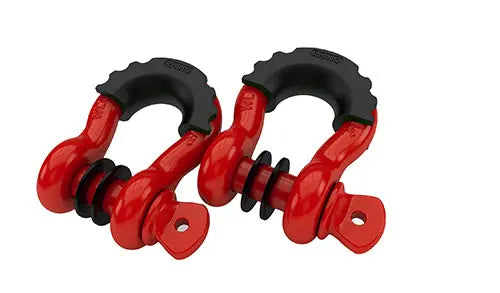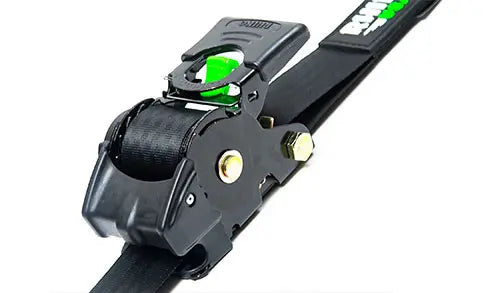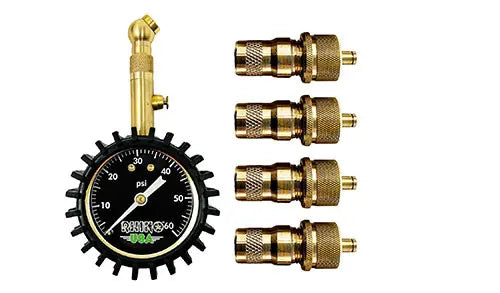Flat tires are an inconvenience that almost every driver will face at some point. Whether it's caused by a nail puncturing the tire or a slow leak, having a tire repair kit on hand can be a lifesaver. Knowing how to properly use a tire repair kit not only saves you time and money, but also keeps you safe on the road.
In this guide, we will walk you through the step-by-step process of using a tire repair kit effectively. By the end of this article, you will have the knowledge and confidence to handle this common automotive issue with ease. So, let's dive in and learn how to get your tires back in shape and ready for the road.
Step 1: Assess the Situation
Before trying to repair your tire, make sure to prioritize safety. Pull over to a safe location away from traffic, ensure that you are on a stable and flat surface, turn on your hazard lights, and engage the parking brake.
Once your vehicle is secure, carefully examine the damaged tire. Identify the source of the puncture, such as a nail, screw, or other sharp object lodged in the tire. Keep in mind that tires can only be repaired if the puncture is in the tread area - sidewall damage is not repairable and requires professional assistance or tire replacement.
Use the following criteria to determine if your tire can be repaired:
- The puncture is located within the tread area of the tire
- The puncture is less than ¼ inch (6mm) in diameter
- There's no visible damage to the internal construction of the tire
If your tire meets these criteria, proceed to the next steps for using a tire repair kit. If not, it's best to seek professional help or replace the tire entirely to ensure your safety on the road.
Step 2: Gather Your Tools
Before you start the tire repair process, it is crucial to gather all the necessary tools to make the job easier and more efficient. Most tire repair kits come with the essential items needed for a successful repair. Here are the key tools you should have on hand:
-
T-handle reamer: This tool is used to clean and prepare the puncture site for the tire plug. It has a T-shaped handle that helps you exert pressure while pushing the tool into the tire.
-
Insertion tool: An important component of the repair kit, the insertion tool is designed to help you insert the tire plug into the puncture. It is often T-shaped or L-shaped with a slot for holding the plug.
-
Rubber cement: This adhesive is used to coat the tire plug before insertion, ensuring a strong bond between the plug and the tire.
-
Tire plugs: These are thick, sticky strips of rubber-like material used to seal the puncture in the tire. Generally, they are coated with adhesive rubber cement during the repair process.
In addition to the tools included in your tire repair kit, you may also need:
-
Pair of pliers: A pair of pliers will be helpful in removing the object that punctured the tire, such as a nail or screw.
-
Lubricant: High-quality lubricant, like silicone oil or graphite powder, is recommended for lubing the tip of the probe (T-handle reamer) for smooth insertion and to prevent damage to the tire.
Once you have all your tools gathered, you are ready to proceed with the tire repair process. Ensure that you work in a safe area and follow all the steps meticulously for a successful repair.
Step 3: Remove the Object
At this stage, you have identified the puncture and located the foreign object, such as a nail or screw, embedded in your tire. It is now time to carefully remove this object while minimizing any further damage to the tire.
Follow these steps:
-
Prepare your tools: Make sure you have a pair of pliers or the appropriate removal tool from your tire repair kit handy.
-
Gain a secure grip: Using the pliers, carefully grip the exposed part of the object. Ensure you have a secure hold on it to prevent it from slipping while extracting.
-
Remove the object: Gently pull the object out of the tire, making sure to do this in a straight manner. Be cautious and attentive as you do this, avoiding any sudden movement that could potentially enlarge the puncture.
By following these steps, you will successfully remove the foreign object and can proceed to the next phase of repairing your tire.
Step 4: Ream the Hole
In this step, you'll prepare the puncture hole for the tire plug insertion. First, locate the T-handle reamer from your tire repair kit. Carefully insert the reamer into the puncture hole on your tire.
Once the reamer is in place, twist it both clockwise and counterclockwise several times. This action serves to clean and slightly widen the hole. Making the hole a little wider and cleaner ensures a better fit for the tire plug and contributes to a more effective seal.
Remember to be gentle but firm when using the T-handle reamer, as you don't want to cause additional damage to the tire. The goal here is to create optimal conditions for the tire plug to seal the puncture effectively.
Step 5: Prepare the Plug
In this step, you will prepare the tire plug for insertion. Retrieve a tire plug from the repair kit. Most tire plugs are made of a sticky, rubber-like material that helps create a strong seal inside the puncture.
Insert one end of the plug into the eye of the insertion tool. Make sure to leave a small portion of the plug exposed, as this will aid in the insertion process. It's important to handle the tire plug with care, as it will be crucial in effectively sealing the puncture.
Before moving to the next step, double-check that the plug is properly placed on the insertion tool. This will ensure a smooth insertion process and a secure repair for your tire.
Step 6: Insert the Plug
Now that you've prepared the hole and the plug, it's time to insert the plug into the puncture. Carefully align the insertion tool with the puncture hole, ensuring that the plug is properly positioned on the tool. This step is crucial for successfully sealing the tire puncture.
With a firm and steady grip on the insertion tool, push the plug into the hole until only a small portion of it remains visible outside the tire. It's important not to force the plug too far, as it might not create a proper seal if fully inserted into the tire.
Finally, to secure the plug in place, swiftly pull the insertion tool straight out of the hole. This motion should leave the plug lodged securely within the tire, creating an airtight seal. Remember to maintain a steady and confident movement while pulling the tool out to ensure that the plug stays in place.
By following these instructions, you have successfully inserted the plug into the puncture hole. Properly performing this step will ensure a long-lasting and effective repair that will keep your tire functioning for many miles to come.
Step 7: Trim Excess Plug
Now that you have successfully inserted the plug into the puncture, it is essential to trim off any excess material for a cleaner and safer repair. To do this, you will need a sharp knife or scissors at hand.
First, carefully examine the plug to determine the amount of material that needs to be removed. Your aim is to achieve a flush finish, so the plug sits smoothly against the tire's tread. This is important as it prevents any part of the plug from catching on the road and causing additional wear or damage.
Using your sharp knife or scissors, gently trim the excess plug material in a steady motion. Be careful not to accidentally cut the tire itself or apply too much pressure that may damage the surrounding tread.
Remember to dispose of the trimmed material responsibly, as leaving it on the ground could pose a hazard to other road users or the environment.
Once the excess plug material has been safely removed, your tire repair is complete and ready for use. Remember to regularly monitor the repaired tire for any signs of further issues and keep up with routine maintenance to ensure its longevity.
Step 8: Apply Rubber Cement (Optional)
Some tire repair kits include rubber cement as an additional sealing option. This can provide extra assurance that the repair is airtight and reliable. If your tire repair kit comes with rubber cement, follow these steps:
-
Inspect the plug: Before applying rubber cement, ensure that the plug is seated properly, filling the puncture hole completely and snugly.
-
Prepare the rubber cement: Open the container of rubber cement and have a small brush or applicator ready for application.
-
Apply the rubber cement a thin, even layer of rubber cement around the plug, covering the area where the plug meets the tire surface. Be careful not to apply too much, as it can cause the plug to slip or be more difficult to seat properly.
-
Allow the rubber cement to dry: Refer to the manufacturer's instructions for the recommended drying time. It's important to let the rubber cement fully cure before using the tire or testing for air leaks.
By following these steps, you can enhance the sealing process and reinforce the tire plug's ability to keep air inside the tire. Remember, rubber cement application is not always essential but can offer greater confidence in the tire repair's durability.
Step 9: Inflate the Tire
Now that the plug is securely in place, it's time to inflate your tire. To do this, use a tire inflator and make sure to follow the manufacturer's guidelines for the appropriate tire pressure for your specific vehicle.
-
Firstly, locate the tire's valve stem and remove its cap.
- Attach the inflator's nozzle to the valve stem, ensuring a secure connection to avoid air leakage.
-
Turn on the inflator and monitor the tire pressure using the inflator's gauge. Keep an eye on the pressure as it rises, and be prepared to stop inflating once you've reached the recommended pressure. Remember that overinflating can be just as harmful as underinflating.
Upon reaching the recommended tire pressure, carefully detach the inflator nozzle from the valve stem and replace the valve stem cap. With the tire properly inflated, you can now lower the vehicle off the jack and proceed with confidence, knowing that you've successfully repaired your tire using a tire repair kit!
Step 10: Check for Leaks
After you have successfully applied the tire repair kit and reinflated your tire, it's important to check the repaired area for any signs of leaks. To do this, you can prepare a simple mixture of soap and water, and apply it to the patched area.
Carefully observe the soapy water solution for any air bubbles forming around the repaired area. Air bubbles are an indication of a leak that may require further action. Keep in mind that some small bubbles might appear initially as the tire repair material settles, so give it a few moments to ensure accurate results.
In case you detect leaks through the presence of air bubbles, you might need to repeat the repair process. Ensure that you follow each step correctly, and don't hesitate to double-check the puncture site, the repair plug, and the surrounding rubber to make sure the repair is effective.
However, if the leak persists despite repeated attempts, it is advisable to seek professional assistance. A tire repair specialist can help identify the cause of the problem and provide the necessary solution to ensure your safety on the road. Always remember that it's better to invest in professional help than risk driving on an unstable tire.
Conclusion:
Using a tire repair kit: To use a tire repair kit effectively, follow these simple steps:
-
Locate the puncture: Carefully inspect your tire to find the puncture site. Remove any foreign objects, such as nails or screws, using pliers.
-
Clean and prepare the puncture: Use the provided tools in the kit to clean and ream the puncture hole, ensuring it is ready for the repair plug.
-
Insert the repair plug: Thread the repair plug through the insertion tool and apply tire repair adhesive if included. Then, push the plug into the puncture hole until only a small portion remains visible.
-
Trim and inflate: Remove the insertion tool and trim any excess plug material from the tire surface. Inflate your tire to the recommended pressure and check for any leaks.
Important note: Tire repair kits are designed to provide a reliable but temporary solution for minor tire punctures. After using a repair kit, remember to have the tire professionally inspected and repaired or replaced as needed to ensure your safety on the road.

















